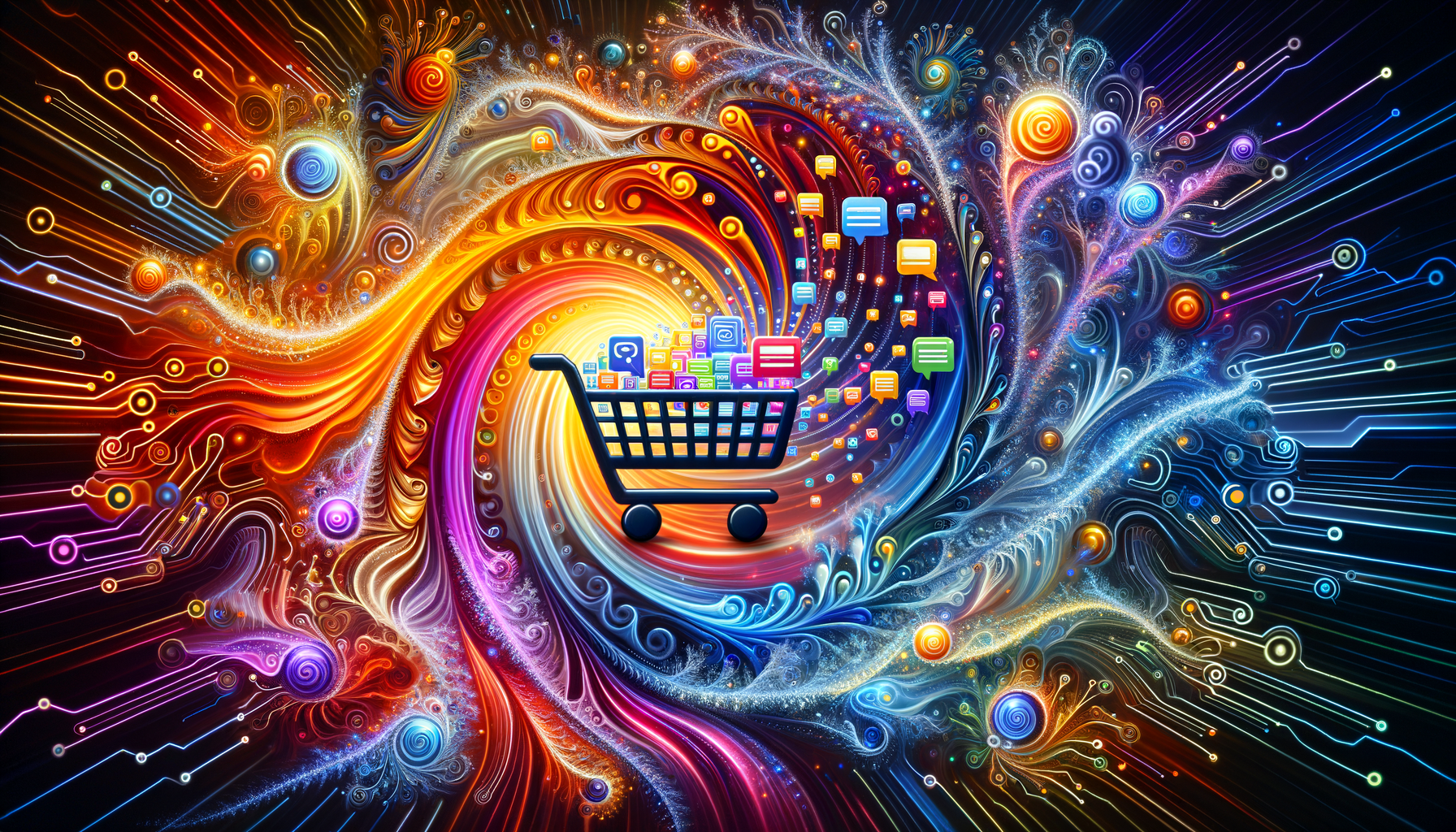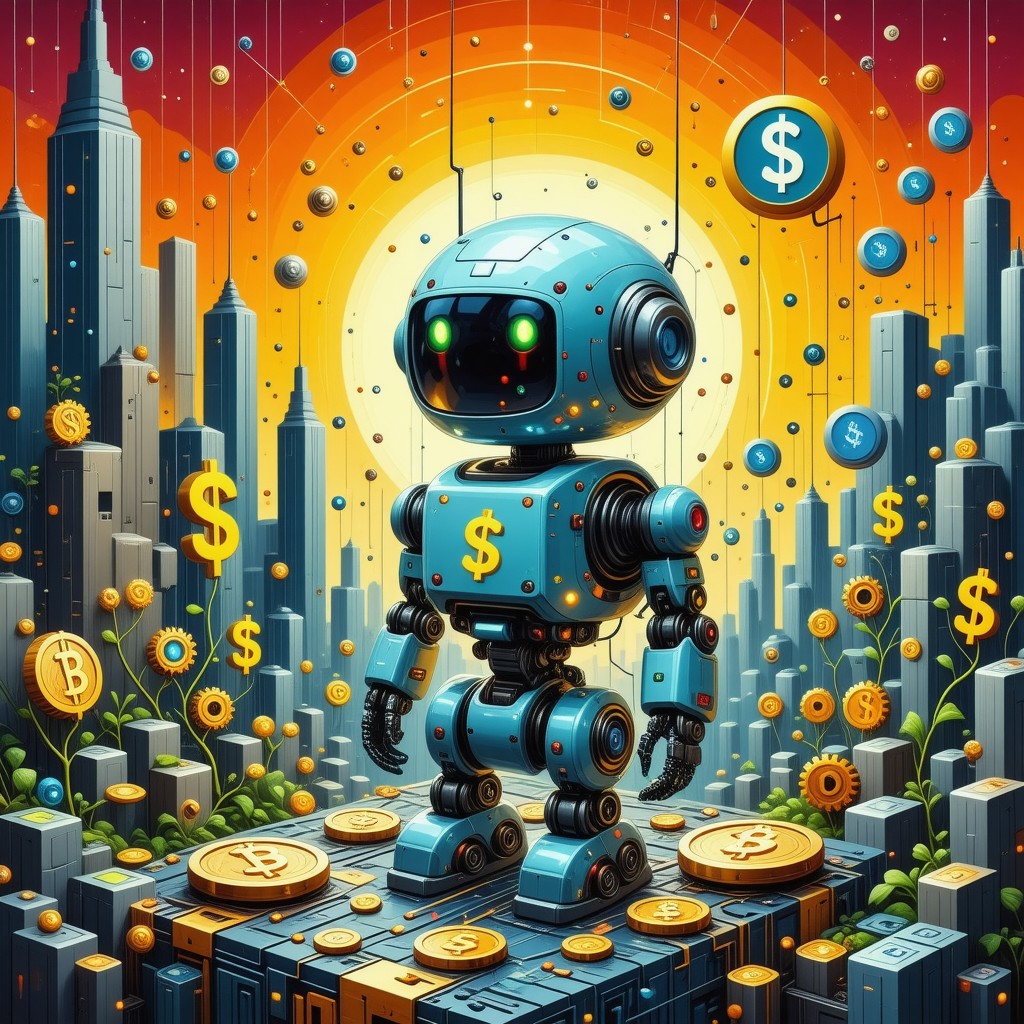오늘날의 빠르게 변화하는 소매 환경에서, 소매 챗봇 은 향상된 고객 서비스. 이러한 혁신적인 도구는 상호작용을 간소화할 뿐만 아니라 쇼핑객의 고유한 요구에 맞춘 개인화된 경험을 제공합니다. 이 기사에서는 소매 챗봇, 소매 챗봇이 무엇인지와 현대 비즈니스에 필수적인 주요 기능을 탐구할 것입니다. 또한, 우리는 소매 챗봇 이 무엇인지와 현대 비즈니스에 필수적인 주요 기능을 탐구할 것입니다. 또한, 우리는 성공적인 구현 사례인 월마트에서 사용되는 챗봇, 그리고 그것이 고객 서비스를 어떻게 향상시키는지 살펴볼 것입니다. 또한, 여러분이 직접 챗봇을 만드는 과정을 안내해 드리겠습니다. 소매 봇, 다양한 유형의 챗봇에 대해 논의하고, 이러한 기술이 소매 산업에 미치는 변혁적인 영향을 강조합니다. 이 기사를 끝내면 투자하는 이유를 이해하게 될 것입니다. 고객 관리 챗봇 경쟁력을 유지하기 위해 필수적입니다.
소매 챗봇이란 무엇인가?
소매 챗봇은 고객에게 개인화된 지원과 추천을 제공하여 쇼핑 경험을 향상시키기 위해 설계된 고급 디지털 어시스턴트입니다. 이러한 챗봇은 인공지능(AI) 및 머신러닝 알고리즘을 활용하여 고객 데이터, 이전 구매, 탐색 행동 및 선호도를 분석하여 맞춤형 제품 제안을 제공합니다.
소매 챗봇의 기본 이해
소매 챗봇은 기업이 고객과 상호작용하는 방식을 혁신하고 있습니다. AI 기술을 활용함으로써 이러한 챗봇은 고객과 실시간으로 소통하며, 전반적인 쇼핑 경험을 향상시키는 지원과 정보를 제공합니다. 다음은 소매 챗봇을 정의하는 몇 가지 주요 기능입니다:
- 개인화된 추천: 고객 데이터를 활용하여 소매 챗봇은 개인의 취향에 맞는 제품을 제안할 수 있어 전환 가능성을 높입니다. 연구에 따르면 맥킨지 & 컴퍼니 개인화된 경험이 판매를 10-30% 증가시킬 수 있다고 합니다.
- 24/7 고객 지원: 소매 챗봇은 24시간 언제든지 이용 가능하여 고객 문의에 즉각적으로 응답하며, 이는 고객 만족도를 높이고 대기 시간을 줄입니다. 보고서에 따르면 IBM, 기업은 챗봇을 구현함으로써 고객 서비스 비용을 최대 30% 절감할 수 있습니다.
- 원활한 통합: 이러한 챗봇은 웹사이트, 소셜 미디어 및 메시징 앱을 포함한 다양한 플랫폼에 통합될 수 있으며, 고객이 선호하는 채널을 통해 브랜드와 상호작용할 수 있도록 합니다. 이러한 옴니채널 접근 방식은 현대 소매 전략에 매우 중요합니다.
- 데이터 수집 및 통찰력: 소매 챗봇은 고객 상호작용에 대한 귀중한 데이터를 수집하며, 이를 분석하여 마케팅 전략과 제품 제공을 개선할 수 있습니다. 이러한 데이터 기반 접근 방식은 소매업체가 시장 동향과 소비자 선호를 앞서 나갈 수 있도록 합니다.
- 향상된 사용자 참여: 인터랙티브하고 매력적인 경험을 제공함으로써, 소매 챗봇은 고객이 사이트에 더 오래 머물도록 하여 구매 가능성을 높입니다. 연구에 따르면 인터랙티브 콘텐츠는 더 높은 참여율로 이어질 수 있습니다.
결론적으로, 소매 챗봇은 고객 참여를 개선하고, 운영을 간소화하며, 개인화된 쇼핑 경험을 통해 판매를 증대시키려는 소매업체에게 강력한 도구로 작용합니다. 소매 환경이 계속 진화함에 따라, AI 기반 챗봇의 도입은 성공을 위해 점점 더 필수적이 될 것입니다.
소매에서 챗봇의 주요 기능
소매에서 챗봇의 주요 기능을 이해하는 것은 고객 서비스 능력을 향상시키려는 기업에 필수적입니다. 다음은 몇 가지 두드러진 기능입니다:
- 자동 응답: 챗봇은 동시에 다수의 문의를 처리할 수 있으며, 일반적인 질문에 대한 빠른 답변을 제공하여 인간 상담원의 업무 부담을 크게 줄입니다.
- 리드 생성: 고객과의 개인화된 상호작용을 통해 챗봇은 효과적으로 리드를 포착하고 판매 퍼널을 안내할 수 있습니다.
- 다국어 지원: 많은 소매 챗봇은 다국어 기능을 제공하여 기업이 다양한 고객층에 맞추고 글로벌 도달 범위를 확대할 수 있도록 합니다.
- 분석 및 보고: 소매 챗봇은 고객 행동 및 선호도에 대한 통찰력을 제공하여 기업이 마케팅 전략을 개선하고 고객 서비스를 향상시키는 데 도움을 줍니다.
- 전자상거래 플랫폼과의 통합: 소매 챗봇은 전자상거래 시스템과 통합될 수 있어 장바구니 복구 및 직접 판매와 같은 기능을 가능하게 하여 쇼핑 프로세스를 간소화합니다.
이러한 기능을 통합함으로써 소매 챗봇은 고객 서비스를 개선할 뿐만 아니라 판매를 촉진하고 브랜드 충성도를 강화합니다.

월마트는 어떤 챗봇을 사용하나요?
월마트는 자사의 독점 챗봇인 월라비를 통해 고객 서비스에서 인공지능의 힘을 수용했습니다. 이 혁신적인 솔루션은 월마트의 운영 내에서 AI 및 생성적 AI 기술을 확장하기 위한 광범위한 전략의 일환입니다. 월라비는 소매 중심의 대형 언어 모델(LLM)로 특별히 설계되어 고객 상호작용을 개선하고 문의에 대한 개인화되고 효율적인 응답을 제공합니다. 고급 생성적 AI 기능을 활용함으로써 월라비는 고객 관리 경험을 크게 향상시켜 월마트가 쇼핑객의 변화하는 요구를 효과적으로 충족할 수 있도록 합니다.
월마트의 월라비 구현은 최첨단 기술을 고객 서비스 전략에 통합하려는 월마트의 의지를 보여줍니다. 이 이니셔티브는 운영을 간소화할 뿐만 아니라 사용자 만족도를 향상시켜 월마트의 고객 참여 접근 방식의 중요한 요소가 됩니다. 월마트의 AI 이니셔티브에 대한 추가 통찰력을 얻으려면 다음과 같은 출처를 탐색할 수 있습니다. 포브스 그리고 테크크런치.
월마트의 챗봇이 고객 서비스를 향상시키는 방법
월마트의 월라비 챗봇은 고객 문의에 대한 빠르고 정확한 응답을 제공함으로써 고객 서비스를 향상시키는 데 중요한 역할을 합니다. 이 챗봇은 제품 가용성부터 주문 추적에 이르기까지 다양한 질문을 처리하도록 설계되어 대기 시간을 줄이고 전반적인 쇼핑 경험을 개선합니다. 이를 통해 월마트는 고객 서비스용 챗봇, 고객 상호작용의 높은 볼륨을 효율적으로 관리할 수 있으며 품질을 저하시키지 않습니다.
더욱이, 월라비의 상호작용 학습 능력은 시간이 지남에 따라 고객의 선호도와 행동에 적응하여 응답을 지속적으로 개선할 수 있게 합니다. 이러한 적응력은 고객의 기대가 끊임없이 변화하는 소매 환경에서 필수적입니다. 월마트는 월라비를 고객 서비스 프레임워크에 통합함으로써 운영 효율성을 향상시킬 뿐만 아니라 고객에게 더 매력적이고 만족스러운 쇼핑 경험을 제공합니다. AI 챗봇이 고객 서비스를 어떻게 변화시키고 있는지에 대한 더 많은 정보를 원하시면 다음 기사를 확인하세요. AI 기반 고객 서비스 봇.
소매 봇 만들기?
소매 챗봇을 만드는 것은 비즈니스 요구를 충족하고 고객 상호작용을 향상시키는 여러 전략적 단계를 포함합니다. 구조화된 접근 방식을 따르면 소매 챗봇 사용자를 효과적으로 참여시키고 판매를 촉진하는 챗봇을 개발할 수 있습니다.
소매 챗봇 만들기 단계별 가이드
효과적인 소매 봇을 구축하려면 다음 단계를 고려하세요:
- 쇼핑 봇 플랫폼 선택: 비즈니스 요구에 맞는 강력한 쇼핑 봇 플랫폼을 선택하세요. 인기 있는 옵션으로는 Shopify, WooCommerce 및 Dialogflow 또는 Microsoft Bot Framework와 같은 맞춤형 솔루션이 있습니다. 각 플랫폼은 고유한 기능을 제공하므로 확장성, 사용 용이성 및 통합 기능을 기준으로 평가하세요.
- 봇의 목적 및 기능 정의: 쇼핑 봇이 수행할 작업을 명확하게 설명하세요. 일반적인 기능으로는 제품 추천, 주문 추적, 고객 지원 및 개인화된 마케팅이 있습니다. 목표 청중을 이해하면 봇의 기능을 맞춤화하는 데 도움이 됩니다.
- 사용자 경험 디자인: 봇의 모양과 느낌을 결정하세요. 브랜드 아이덴티티에 맞는 직관적인 인터페이스를 만드세요. 대화형 디자인 원칙을 사용하여 봇이 효과적으로 소통하고 사용자를 참여시킬 수 있도록 하세요. 사용자 경험을 개선하기 위해 A/B 테스트를 사용하는 것을 고려하세요.
- 템플릿 및 프레임워크 활용: 선택한 플랫폼에서 제공하는 미리 제작된 템플릿을 활용하여 개발 프로세스를 가속화하세요. 이러한 템플릿은 봇의 견고한 기반을 제공하여 특정 요구 사항에 따라 기능과 워크플로를 사용자 정의할 수 있게 합니다.
- 전자상거래 채널과 통합: 쇼핑 봇을 웹사이트, 소셜 미디어 플랫폼 및 Facebook Messenger 또는 WhatsApp과 같은 메시징 앱을 포함한 다양한 판매 채널에 연결하세요. 이 옴니채널 접근 방식은 고객 접근성과 참여를 향상시킵니다.
- AI 쇼핑 챗봇 교육: 기계 학습 알고리즘을 구현하여 역사적 고객 상호작용 데이터를 사용하여 봇을 교육하세요. 봇의 정확성과 반응성을 개선하기 위해 교육 데이터 세트를 정기적으로 업데이트하세요. 고객 문의 이해를 향상시키기 위해 자연어 처리(NLP) 기술을 통합하세요.
- 성능 모니터링 및 최적화: 분석 도구를 사용하여 봇의 성능을 지속적으로 추적하세요. 사용자 참여, 전환율 및 고객 만족도와 같은 주요 지표를 모니터링하세요. 이 데이터를 사용하여 봇의 기능에 대한 정보에 기반한 조정 및 개선을 수행하세요.
이 단계를 따르면 매우 효과적인 소매 봇 고객 경험을 향상시키고 판매를 촉진하는 챗봇을 만들 수 있습니다.
소매 챗봇 구축을 위한 도구 및 플랫폼
챗봇을 구축할 때 소매를 위한 챗봇, 여러 도구와 플랫폼이 개발 과정을 용이하게 할 수 있습니다. 다음은 몇 가지 인기 있는 옵션입니다:
- Dialogflow: Google이 소유한 플랫폼으로, 강력한 자연어 처리 기능을 제공하여 대화형 인터페이스를 만드는 데 적합합니다.
- Microsoft Bot Framework: 이 프레임워크는 여러 채널에서 챗봇을 구축하고 배포하기 위한 포괄적인 도구 세트를 제공합니다.
- Chatfuel: 코딩 지식 없이도 Facebook Messenger용 챗봇을 만들 수 있는 사용자 친화적인 플랫폼입니다.
- ManyChat: 마케팅 자동화에 중점을 두고 있는 ManyChat은 기업이 Facebook Messenger와 SMS를 통해 고객과 소통하도록 돕습니다.
- 브레인 포드 AI: 이 플랫폼은 다국어 지원 및 사용자 정의 가능한 템플릿을 포함한 고급 AI 기능을 제공하여 고객 서비스 챗봇을 향상시키려는 기업에 강력한 후보가 됩니다. Brain Pod AI에 대해 더 알아보세요. 여기.
올바른 플랫폼을 선택하는 것은 당신의 소매를 위한 챗봇. 각 옵션을 특정 요구 사항과 제공하는 기능에 따라 평가하세요.
How Will Chatbots Transform the Retail Industry?
Chatbots are set to revolutionize the retail landscape by enhancing customer interactions and streamlining operations. As we delve into the impact of chatbots on customer experience, it becomes clear that these digital assistants are not just a trend but a fundamental shift in how retailers engage with their customers.
The Impact of Chatbots on Customer Experience
Retail chatbots are transforming the way customers interact with brands, providing a personalized shopping experience that caters to individual preferences. By leveraging advanced algorithms and machine learning, chatbots analyze customer data, preferences, and purchase history to offer tailored product recommendations and promotions. This level of personalization can lead to a significant increase in sales, with studies indicating a potential 10-30% boost in revenue from personalized experiences.
Moreover, chatbots enhance operational efficiency by automating routine inquiries and tasks. This allows retail staff to focus on more complex customer interactions and strategic initiatives. According to a report from Salesforce, 69% of consumers prefer chatbots for quick communication, underscoring their role in improving customer service efficiency. Additionally, chatbots provide 24/7 이용 가능성, ensuring that customers can receive assistance at any time, which significantly boosts customer satisfaction and retention rates. Research from HubSpot shows that 47% of consumers are open to purchasing items through a chatbot, highlighting their effectiveness in driving sales.
Future Trends in Retail Chatbots
The future of retail chatbots is bright, with several trends poised to shape their evolution. One key trend is the integration with other technologies. Retail chatbots can seamlessly connect with CRM systems, inventory management, and e-commerce platforms, creating a cohesive shopping experience. This integration not only enhances operational efficiency but also provides customers with real-time information about product availability and order status.
Furthermore, the ability of chatbots to collect valuable customer insights through interactions will become increasingly important. This data can inform marketing strategies and product development, leading to more effective business decisions. A report from Gartner suggests that by 2025, 75% of customer interactions will be powered by AI, including chatbots, emphasizing the growing reliance on these tools in retail.
As retailers continue to adopt chatbots, they will not only improve customer engagement but also realize substantial cost reductions. Implementing chatbots can lead to significant savings by reducing the need for extensive customer service teams. According to a study by Juniper Research, chatbots are expected to save businesses over $8 billion annually through improved customer service efficiency.
In conclusion, the integration of chatbots into retail operations is not just a technological advancement; it is a strategic move towards enhancing customer experiences and driving business growth. Retailers that embrace this transformation will be well-positioned to thrive in an increasingly competitive market.

챗봇의 4가지 유형은 무엇인가요?
Understanding the different types of chatbots is crucial for businesses looking to enhance their customer service and engagement strategies. Retail chatbots can be categorized into several types, each serving unique functions and purposes. Here’s an overview of the main types of chatbots used in retail:
Overview of Different Types of Chatbots for Retail
1. 규칙 기반 챗봇: These chatbots operate on predefined rules and scripts. They can only respond to specific commands or keywords, making them suitable for straightforward tasks like FAQs. Their limitations include a lack of understanding of natural language nuances.
2. 키워드 인식 기반 챗봇: Utilizing keyword recognition, these chatbots interpret user inputs by analyzing the keywords in a user’s message to provide relevant responses. While more flexible than rule-based chatbots, they still struggle with complex queries and context.
3. 메뉴 기반 챗봇: These chatbots guide users through a series of predefined options or menus. Users select from available choices, making it easy to navigate services or information. This structure is effective for customer service scenarios where specific queries can be anticipated.
4. 맥락 기반 챗봇 (지능형 챗봇): Leveraging artificial intelligence and machine learning, these advanced chatbots understand context and user intent. They can engage in more natural conversations, learning from interactions to improve over time. Contextual chatbots are ideal for personalized customer experiences.
5. 하이브리드 챗봇: Combining rule-based and AI-driven approaches, hybrid chatbots can handle both structured queries and more complex interactions. They offer flexibility and adaptability, making them suitable for a wide range of applications.
6. 음성 지원 챗봇: These chatbots utilize voice recognition technology to interact with users through spoken language. They are increasingly popular in smart devices and virtual assistants, providing hands-free convenience.
7. Declarative Chatbots: Allowing users to make statements or requests in natural language, these chatbots interpret the intent behind the input, facilitating more fluid conversations.
8. Predictive Chatbots: Utilizing data analytics and machine learning, predictive chatbots anticipate user needs based on previous interactions, proactively offering assistance and enhancing user engagement.
Best Retail Chatbot Examples and Their Use Cases
Several brands have successfully implemented chatbots to improve their customer service and engagement. For instance, 월마트 uses a sophisticated chatbot to assist customers with inquiries, making the shopping experience more efficient. Similarly, Amazon employs chatbots for customer support, streamlining the resolution of issues and enhancing user satisfaction.
또 다른 주목할 만한 예는 세포라, which utilizes a chatbot to provide personalized product recommendations, helping customers find the right products based on their preferences. These implementations showcase how chatbots can effectively enhance customer care and streamline retail operations.
For businesses looking to explore chatbot solutions, platforms like 브레인 포드 AI offer advanced chatbot functionalities that can be tailored to specific retail needs, enhancing customer interactions and support.
For further insights into the impact of chatbots in retail, you can explore our article on best AI chatbots and conversational AI examples.
챗봇을 판매하여 돈을 벌 수 있을까요?
Yes, you can make money selling chatbots through various strategies. Here are some effective methods to monetize your chatbot:
- Direct Sales: Develop and sell your chatbot directly to businesses. Many companies are looking to enhance customer engagement and streamline operations through automation. By creating a tailored chatbot that meets specific business needs, you can charge a premium price. According to a report by 그랜드 뷰 리서치, the global chatbot market is expected to reach $1.34 billion by 2024, indicating a growing demand for these solutions.
- 구독 모델: Offer your chatbot as a subscription service. Businesses can pay a monthly fee to access and utilize your chatbot, providing a steady revenue stream. This model is particularly effective for chatbots that require regular updates and maintenance.
- 제휴 마케팅: Partner with businesses to promote their products or services through your chatbot. You can earn commissions on sales generated through your chatbot’s recommendations. This approach not only provides income but also enhances the chatbot’s value to users by offering relevant products.
- 프리미엄 모델: Provide a basic version of your chatbot for free while charging for premium features. This strategy can attract a larger user base, and once users see the value of your chatbot, many may opt for the paid version.
- 컨설팅 서비스: Leverage your expertise in chatbot development by offering consulting services to businesses looking to implement chatbots. This can include strategy development, integration with existing systems, and ongoing support.
- Training and Workshops: Conduct training sessions or workshops for businesses interested in developing their own chatbots. This not only positions you as an expert in the field but also generates additional income.
- 맞춤화 및 통합: Offer customization services for existing chatbot platforms. Many businesses require specific functionalities that off-the-shelf solutions do not provide. By offering tailored integrations, you can charge for your expertise.
By employing these strategies, you can effectively monetize your chatbot and tap into the growing market for automated solutions. For more insights on chatbot monetization, refer to sources like 챗봇 매거진 및 정보 관리 국제 저널, which provide valuable information on industry trends and best practices.
Success Stories of Selling Chatbots for Customer Support
Numerous businesses have successfully monetized chatbots, particularly in the realm of customer support. For instance, companies like Zendesk 그리고 인터컴 have leveraged chatbots to enhance their customer service offerings. These platforms not only provide chatbots for customer service but also integrate advanced analytics to help businesses understand customer interactions better.
Additionally, many small businesses have reported significant improvements in customer satisfaction and operational efficiency after implementing chatbots. By automating responses to frequently asked questions and providing 24/7 support, these businesses have been able to reduce operational costs while improving customer engagement.
For example, a retail company that integrated a 고객 지원을 위한 챗봇 saw a 30% increase in customer satisfaction ratings and a 25% reduction in response times. Such success stories highlight the potential of chatbots not only as a revenue-generating tool but also as a means to enhance overall customer experience in the retail sector.
결론
As we look toward the future of retail, the role of chatbots in enhancing customer service is becoming increasingly vital. Retail chatbots are not just a trend; they represent a fundamental shift in how businesses interact with their customers. By leveraging advanced AI technologies, these chatbots can provide personalized, efficient, and round-the-clock support, significantly improving the overall customer experience.
The Future of Chatbots in Retail and Customer Service
The future of chatbots in retail is bright, with continuous advancements in artificial intelligence and machine learning. Retail chatbots are expected to evolve, becoming more intuitive and capable of handling complex customer inquiries. This evolution will lead to even greater integration of chatbots into various retail platforms, enhancing customer engagement and satisfaction. Companies like 브레인 포드 AI are at the forefront of this innovation, offering sophisticated AI solutions that can be tailored to meet the specific needs of retail businesses.
Why Investing in Chatbots for Customer Care is Essential
Investing in chatbots for customer care is essential for retailers aiming to stay competitive in a rapidly changing market. Chatbots for customer service not only streamline operations but also provide valuable insights into customer behavior and preferences. By implementing a 일반적인 문의나 불만을 즉시 해결합니다., businesses can enhance their service offerings, reduce response times, and ultimately drive sales. As more consumers expect instant responses and personalized experiences, the integration of chatbots in retail will become a necessity rather than an option.




